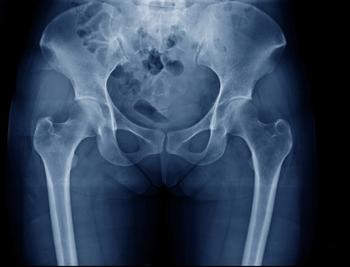
Homing in on passion, commitment, are key also to maintaining excellence in surgical field.

Homing in on passion, commitment, are key also to maintaining excellence in surgical field.

With patient-centered care being the mantra of 21st-century medicine, the decision to proceed with fertility surgery in women with endometriosis should be based on the individual patient, her reproductive expectations, her specific disease pattern, her support, family network, and available health care resources.

“Improved vision, laparoscopy and endoscopic surgery were made possible by an image revolution,” said Michel Canis, MD, PhD, an ob/gyn from Clermont-Ferrand, France, who chaired the panel.

“Operating on a frozen pelvis is probably the most difficult situation a gynecologist can face within his surgical activities,” said moderator Mario Malzoni, chief of the Endoscopica Malzoni Center for Advanced Pelvic Surgery at the National Center for Endometriosis, in Avellino, Italy.

Chronic pelvic pain is costly to diagnose and treat, but appropriate and timely interventions can lead to a restoration of quality of life.

These tips for implementing good technique in laparoscopic surgeries can help reduce complications and result in faster surgeries.

Ever wonder about investing in 3D technology, the best candidates for LESS, and the utility of dual-function instruments? Here's one OB/GYN's opinion.

The levonorgestrel IUD is particularly helpful in patients with abnormal uterine bleeding who require an interval therapy before surgery can be performed, Harvard physicians find.

New research exposes a need for preoperative screening of even low-risk women undergoing robotic sacrocolpopexy, particularly those with risk factors such as obesity or diabetes.

Chromopertubation is typically performed laparoscopically. However, hysteroscopic chromopertubation may spare patients from multiple procedures. But is it accurate?

The surgical outcomes of single port pelvic surgeries (SiPPS) for a variety of gynecologic oncology indications are similar to those of traditional laparoscopic techniques.

Fourteen percent of infertile patients have uterine cavity abnormalities despite normal ultrasound examination findings, research shows.

Laparoscopy for ruptured ectopic pregnancy and massive intra-abdominal bleeding was associated with shorter operative time and less intraoperative blood loss than laparotomy.

Surgeons who perform a high volume of hysterectomies each year are less likely to injure the lower urinary tract during surgery.

Outpatient hysteroscopic metroplasty with bipolar electrode is an effective treatment in patients with infertility related to septate uterus.

Data show that maintaining surgical proficiency results in better outcomes for laparoscopic hysterectomy. The magic number for maintenance: 20 procedures a year.

There is a prevalence of ileocecal involvement (IC) in women with deep, infiltrating endometriosis (DIE) according to the study presented at AAGL.

A study to determine the prevalence rate of endometriosis in Hispanic women found that endometriosis may be under diagnosed due to failure to biopsy suspected lesions at the time of surgery and failure to accurately dictate and thoroughly describe operative findings in OpNote.

A systematic review of literature found that NovaSure® procedures resulted in high patient satisfaction, high rates of amenorrhea and low reintervention rates.

Preoperative measurement of intra-abdominal visceral fat, and the ratio of intra-abdominal visceral fat to subcutaneous fat, may help predict women at greater risk for difficulties during robotic surgery.

The use of NovaSure for endometrial ablation results a variety of poor pregnancy outcomes, according to a study presented by Shannon Smith, MD, at the Global Congress of the American Association of Gynecologic Laparoscopists.

Although operative time is longer as compared with laparotomy, minimally invasive hysterectomy in obese patients is safe, with less blood loss and shorter hospital stays.

While the cervical stump may serve as a tissue barrier for a patient who has undergone a laparoscopic sacrocervicopexy for organ prolapse, mesh erosion and bacterial infection can still occur.

In obese patients, laparoscopic ports should be placed more than 10 centimeters from the midline to minimize the chance of injury to epigastric vessels, according to research presented at the 41st Global Congress of the American Association of Gynecologic Laparoscopists.

Radiofrequency volumetric thermal ablation is a safe and effective treatment for menorrhagia in women with symptomatic fibroids, providing both clinically and statistically significant reduction in blood loss, according to new research.

More than 64% of the adult women in the United States are overweight or obese, and these patients pose special challenges for surgeons. New research examining outcomes and complication rates, particularly in the emerging field of robotic surgery, will allow better management of these patients, and ObGyn.net will be paying special attention to this research at AAGL 2012 in Las Vegas.

ObGyn.net is headed to AAGL 2012 in Las Vegas, and we want to know: Which plenary sessions interest you most?

With AAGL 2012 right around the corner, we’re looking back at some of the most popular articles to come out previous AAGL meetings.

Frozen eggs are comparable to fresh eggs for IVF cycles according to a new ASRM report.

The operating room is the most common place for medical errors to occur in the hospital setting. Here, Dr. Bill Parker, a gynecologist in Santa Monica, Calif., discusses improving patient safety.